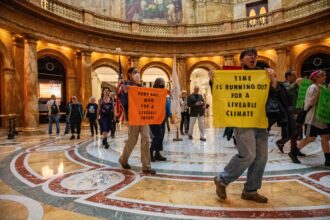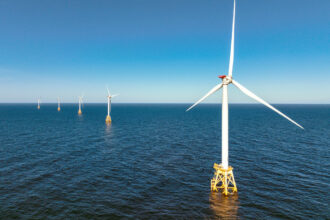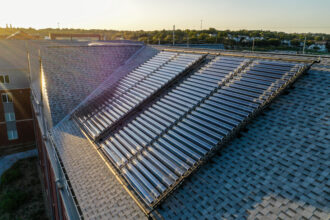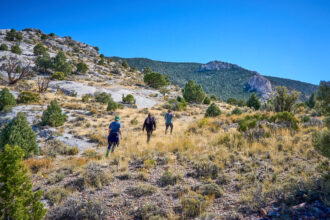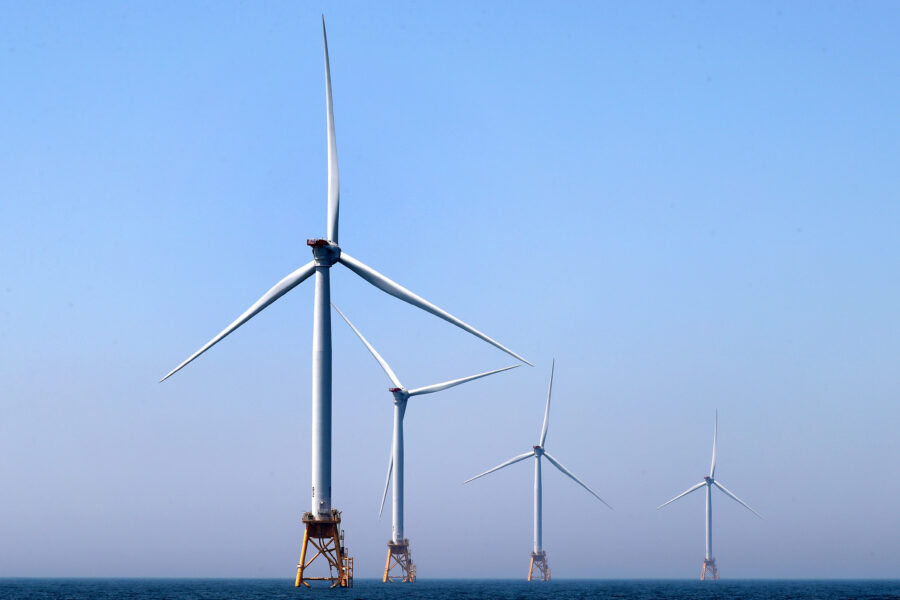BORNHOLM, Denmark—On many maps of Denmark, the island of Bornholm appears as an inset box because it’s so far away from the rest of the country.
To get there from Copenhagen, travelers take a train to Malmö, Sweden, change to a smaller train, and then take a ferry. The island, known for granite cliffs and smoked fish, feels like a distant outpost.
But Bornholm has an outsized role to play in Denmark’s transition to clean energy.
It is going to serve as the country’s first “energy island,” a showpiece that will include offshore wind farms and other power infrastructure that will deliver electricity to several countries—and provide a boost in jobs and income.
But the project isn’t here yet, and won’t be until 2030 or later, due in part to the deliberate pace the Danish and European governments have set.
Jacob Trøst, Bornholm’s mayor, is preparing his constituents for a significant change that doesn’t yet feel tangible.
“If people could see the cranes, the workers starting, then they would start to realize, ‘Wow, this is gonna happen,’” he said, interviewed in his minimalist, white-walled office.
He would like the new jobs to arrive “as fast as possible.”
Denmark is on the leading edge of the transition to clean energy. But many people here feel a sense of alarm that progress isn’t advancing fast enough.
The country shows that ambitious goals can create a version of failure that would be success just about anywhere else. For example, officials say Denmark is not on track to reach its target of reducing emissions by 70 percent by 2030 compared to 1990 levels. And, municipal leaders in Copenhagen, the capital city, say they are not going to meet their goal of net-zero emissions by 2025. The targets are some of the most aggressive for any country or large city in the world.
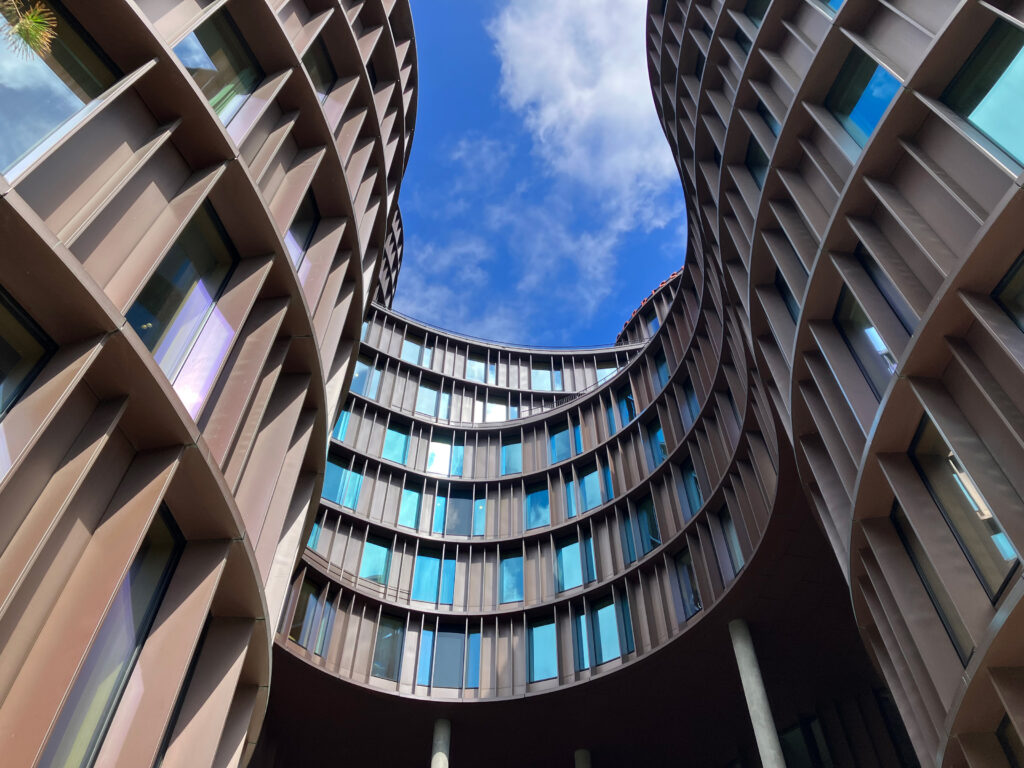
Part of the challenge is that Denmark is already several steps ahead of most other countries in making a clean energy transition. It leads the world in the share of electricity it gets from wind farms, and homegrown wind energy companies like Vestas and Ørsted are global players. Its EV market is soaring. It is a global center for the design and construction of energy efficient buildings.
After accomplishing so much, the next steps are more difficult. The country needs to cut emissions from agriculture and risk blowback from farmers. It needs to find cleaner ways to fuel sea vessels. It needs to develop a large-scale carbon capture system that actually works.
And, it needs to manage gigantic projects like Bornholm’s energy island, which holds the promise to reduce emissions across Northern Europe.
While countries like the United States work their way through earlier stages of the energy transition, Denmark is closer to the middle of its journey and found that the challenges don’t get any easier, even in a nation whose citizens broadly favor action to address climate change.
“Now it’s crunch time,” said Connie Hedegaard, a former head of the Danish environment ministry and former European commissioner for climate action who now is board chair for Concito, a leading Danish environmental think tank.
She believes the government is moving at a careful pace on some aspects of climate action because of a reluctance to stir up opposition, especially in rural communities. But she has concerns that this approach risks inciting an even larger backlash from younger voters who want rapid change.
“They have, in my view, neglected to have a more genuine communication with people,” she said of the government.
Genuine communication would emphasize that Danes need to be willing to change their behavior to aid an energy transition, she said. This might mean eating less of certain meats, or paying more for certain products.
If this is a conversation that Denmark’s leaders aren’t yet ready to have, it raises the question of whether, and when, it can happen anywhere.
Building an Energy Island
Jesper Jürgensen works his way through a slideshow that includes one of those maps with Bornholm as a small inset. Next is a map that places Bornholm close to the center when showing current and planned offshore wind development in the Baltic Sea.
“This is a perfect situation,” he said, emphasizing how the island’s location gives it a big advantage in attracting jobs related to offshore wind.
He works for the Port of Rønne, the publicly owned authority that runs the island’s largest port.
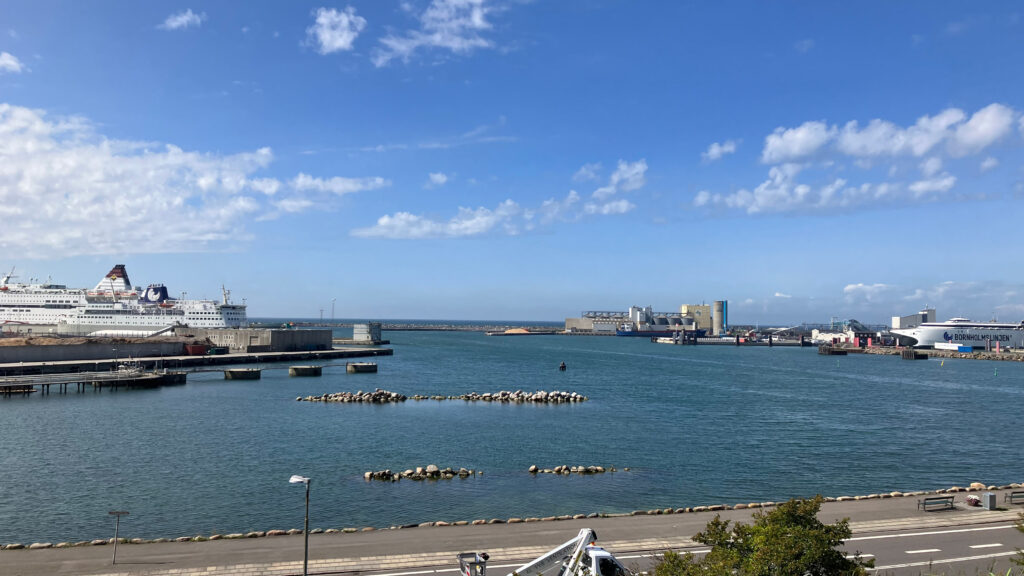
Bornholm covers 227 square miles, which is about one-sixth the size of Long Island, and the population is about 40,000. The largest town, Rønne, has about 14,000 residents.
Jürgensen’s office is in an industrial area near the water, with a view of a giant docked Viking Cruises ship and a fenced-in staging ground for Vestas, the wind turbine manufacturer.
The Vestas blades, hubs and other parts are for a nearby offshore wind farm that is not part of the energy island. When that project gets going, it will be much larger than anything Bornholm has seen. Jürgensen and others in the local business community hope that the energy island project will cement Bornholm’s status as a center of offshore wind development for decades, encompassing many projects.
The energy island would have 3 gigawatts of electricity generating capacity from offshore wind and other resources. The construction phase would attract 7,000 skilled workers and 5,000 unskilled workers to work on the project, and the equivalent of billions of dollars of spending, according to a 2021 analysis commissioned by the island’s government.
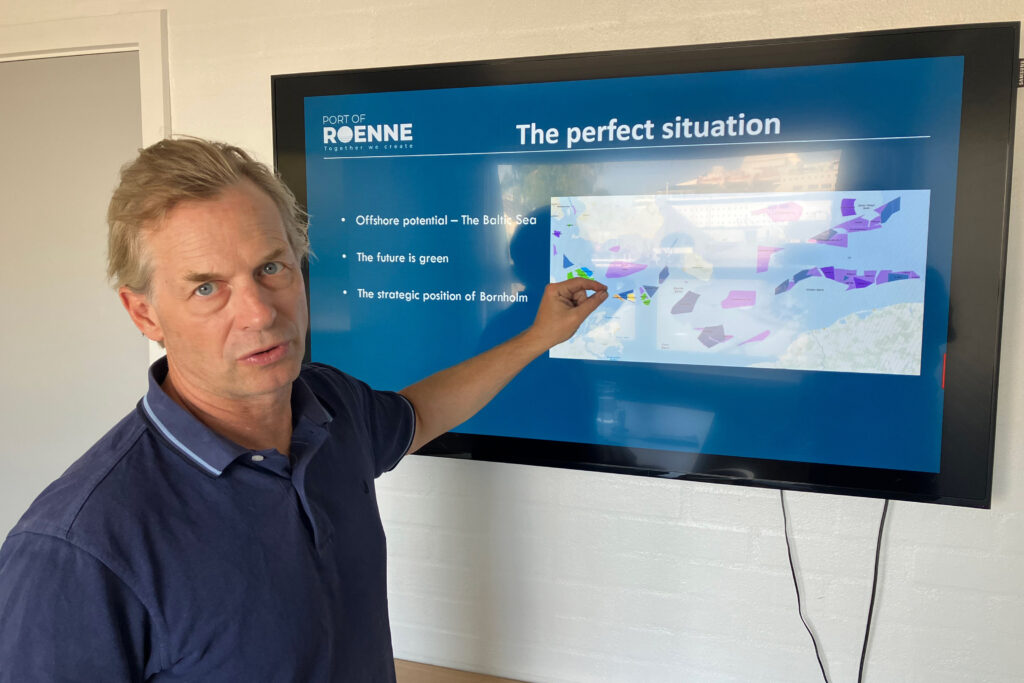
It would be followed by a second project on the North Sea, which would not involve Bornholm. That project would be built around an artificial island and have 10 gigawatts of capacity.
The idea behind the projects is that countries can achieve economies of scale by putting large amounts of offshore wind and other energy infrastructure in and around islands. The locations are part of the appeal, allowing for delivery of electricity to several countries via undersea cables.
Energy islands are central to the federal government’s clean energy plans. They were what Prime Minister Mette Frederiksen chose to focus on during her 2021 remarks at a climate summit held by the Biden administration.
“An island creating clean electricity,” she said. “Clean fuels, green innovation, for millions of European households. That’s our Danish vision of the world’s first energy island.”
People in Bornholm have heard this kind of talk for years and are eager to see it come to fruition.
A Once in a Lifetime Opportunity
Trøst, mayor of a regional municipality that includes the entire island, spent most of his career as a police officer in another part of the country. He came to the island for a temporary assignment in 2017 not knowing what to expect.
He found the people to be nice to an extent that was different from any place he had been before. Even the criminals were nice, compared to those he had known before.
He thinks this intrinsic kindness is a result of the island’s small population and surface area. Residents see the same people all the time and realize they need to coexist.
It’s easy to be in a pleasant mood in a place with such natural beauty—from the cozy central square of Rønne, to remote areas with striking views of the Baltic Sea during the day and the stars at night.
Trøst decided to move to Bornholm permanently and soon got involved in local politics. He won an election for mayor in 2021 and is a member of the center-right Conservative People’s Party. (The party’s platform would put it in the political center if it was in the United States.)
Now he must contend with some of the island’s existential worries. A big one is a decades-long brain drain in which graduates from the local schools have found a lack of variety of jobs, and moved away.
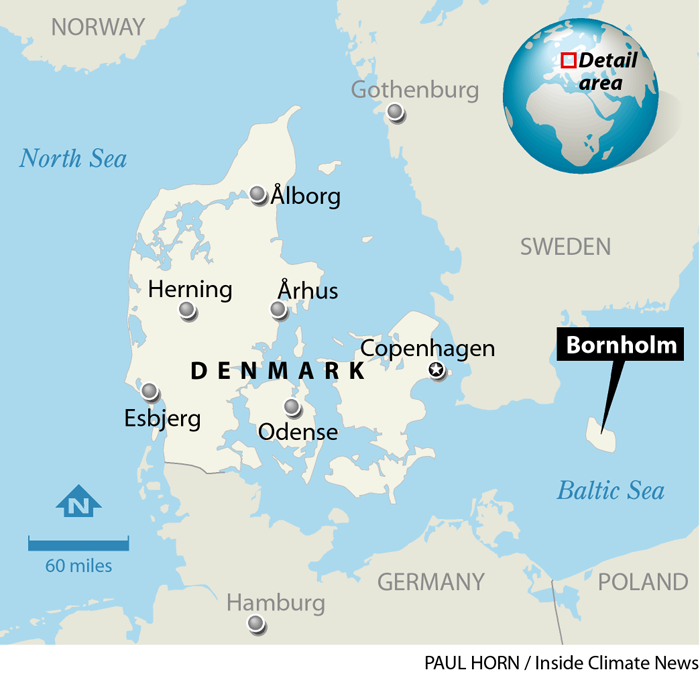
Trøst and other leaders see the energy island as a once-in-a-lifetime opportunity to attract high-paying jobs outside of the local mainstays of tourism and agriculture.
But development has been slow. The Bornholm project has been in the works for more than a decade. The current holdup is that the Danish government needs to sort through details of how the project would work in electricity markets and how to run the process to select the companies that will build offshore wind farms and other contractors.
“When you see the timeline with different processes, you realize, ‘Well, yeah, there’s a reason for this to take time,’” Trøst said. “Of course, you could make new laws in order to speed up these processes, but you risk losing some people.”
His talk of “losing people” touches on one of his main concerns, which is that the population of Bornholm maintains its support for the project. Polling has shown a large majority of the island’s residents approve of the project, but he knows that views could shift.
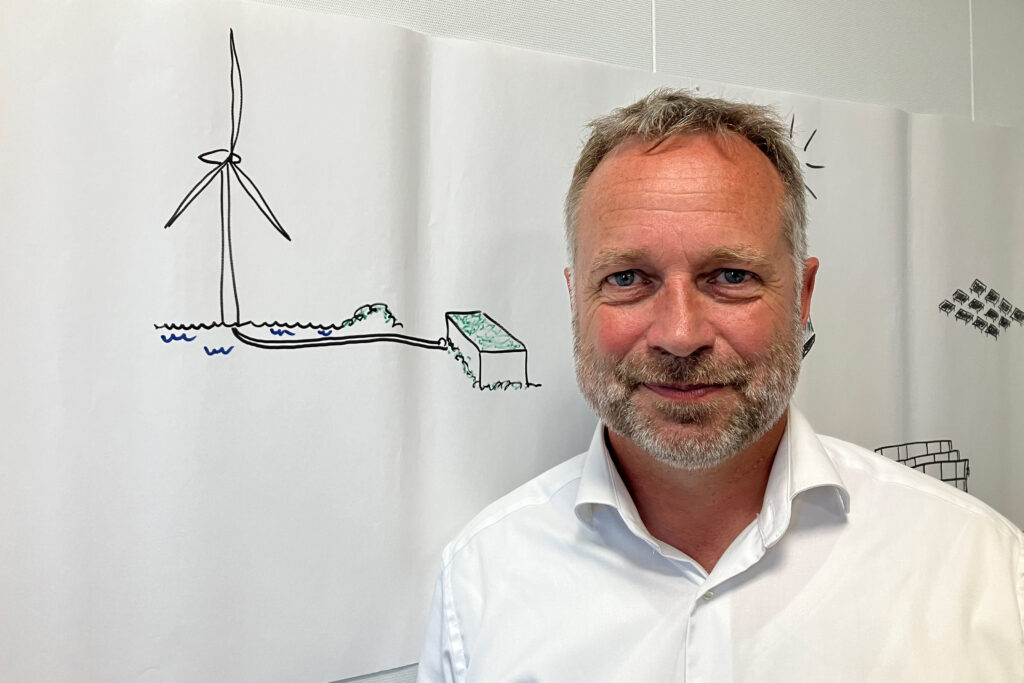
One of his priorities when working with the federal government is to make sure that property owners who live next to planned energy infrastructure will get compensation for the disruption that will come from construction crews and the permanent change to their views. The projects on the island will include a new industrial area to hold rows of transformers that will be connected by underwater cables to offshore wind farms.
Trøst estimates that only about 20 households are directly affected, but says it is vital that they and the broader public feel like those people were treated fairly.
So does he think the project is on track, or can get on track, to be operational by 2030?
“It’s still possible,” he said. “But I also know that like most projects, especially of this size, there are many things that can prolong the process. So I still hope for 2030, but I also know that there’s a big chance it might be prolonged by a year or two years. It’s very hard to say, because there are some things that need to fall in place.”
Green Growth
Denmark’s status as a clean energy leader has its roots in the global oil crisis of 1973.
Danish officials took action to conserve fuel, with a ban on driving on Sundays and a reduction in speed limits. The hardship helped to convince political leaders and the public that the country needed to reduce dependence on imported oil and do a better job of conserving energy.
Plenty of other countries faced an economic downturn and social upheaval due to the oil crisis, but in Denmark it had more of a lasting effect. One reason may be that, unlike its neighbors, Denmark was not a major energy producer in the early 1970s. It didn’t have the hydropower of Sweden or the coal of Germany.
The Danish government worked to develop other methods of generating energy. One of the successes was in wind energy, with some of the world’s first commercial-scale wind turbines going online in the country in the late 1970s.
Denmark also expanded its production of oil and gas, thanks to the discovery of resources offshore in Danish territory. The country started slowly, with the first North Sea production in 1972, and then ramped up to the point, in 1997, that Denmark was a net exporter.
But Denmark becoming an oil exporter needs to be understood in the context of another essential fact: Denmark is small. Its population of 5.7 million is about the same as that of Minnesota, only with about one-fifth of that state’s surface area.
Denmark’s leaders realized early on that their push for a clean energy transition would do little good if it only led to change within the country’s borders. The government has managed the internal transition along with a push to encourage the whole world to follow suit.
This story is funded by readers like you.
Our nonprofit newsroom provides award-winning climate coverage free of charge and advertising. We rely on donations from readers like you to keep going. Please donate now to support our work.
Donate Now“To truly realize the potential for green growth, we must make these partnerships beyond individual countries and beyond regions,” said Prime Minister Helle Thorning-Schmidt in 2011, shortly after her center-left coalition took office. “There are plenty of businesses, investors, innovators and researchers around the world ready to be part of the green transition.”
Soon after, her government passed a law requiring an economy-wide transition to net-zero emissions by 2050.
Other countries had talked about similar measures for parts of the economy, such as the electricity sector, but Denmark was one of the first to pass a law that was so broad in scope.
Copenhagen took a similar leadership role among cities with its 2012 commitment to get to net-zero emissions by 2025.
Then, in 2020, Denmark agreed to stop producing offshore oil and gas, one of the first countries to do so. The government passed a measure banning the issuance of new drilling leases and said that owners of existing leases needed to stop production by 2050. The country’s fossil fuel production had peaked in the mid-2000s, so the lack of new leases means a continuation of the existing trend of a long-term decline.
Living Up to Promises
While Bornholm waits for its big project, Copenhagen is dealing with the shortcomings of a project that started construction a decade ago.
Visitors can see it as they walk from the center of the city across one of the footbridges to the island of Amager. The density and grand architecture of the city fades into low-rise buildings and a highly unusual power plant.
The plant, Amager Bakke, was built to burn some of the city’s municipal waste to produce heat and electricity, and do it with style. The design has a sloping metal exterior, with hundreds of windows cut into the shiny surface.
Officials touted the plant’s carbon capture system, which would gather and store carbon dioxide and help Copenhagen to meet its goal of carbon neutrality by 2025.
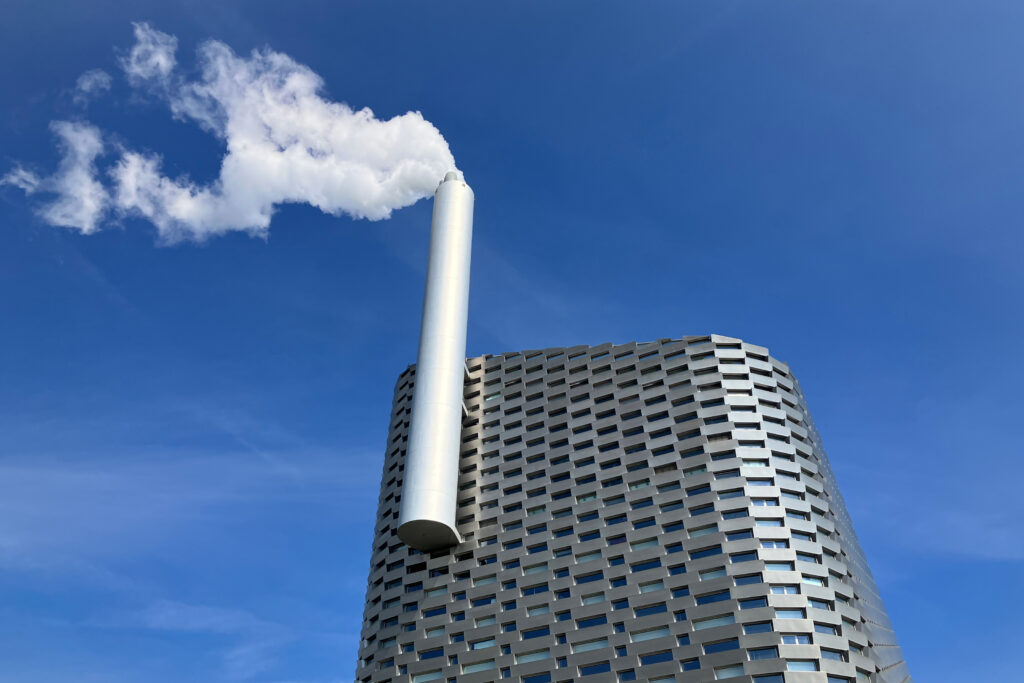
But this is more than a power plant. It is also the home of CopenHill, a recreation area that includes a ski slope on the slanted roof where visitors can rent skis and descend a course that goes all the way to the ground. Instead of snow, the surface is Neveplast, a green plastic that resembles artificial turf and mimics the slippery effects of snow. Tourists also can take a glass elevator up 12 stories to a rooftop cafe with some of the best views in the city.
On an August afternoon, tourists from several continents sipped drinks and posed for selfies. One of the only discordant notes was the faint smell of charred trash wafting up through the vents.
Now, 10 years after Amager Bakke broke ground and six years after it opened, the plant has gone from a symbol of Copenhagen’s climate leadership to—at least for now—a failed experiment. The plant has a carbon capture demonstration project that is handling some of the emissions, but this was supposed to be a small step toward a much larger carbon capture system. The larger system has been on hold because of a variety of financial and technical concerns that have made the project ineligible to tap a federal fund for carbon capture initiatives. City government officials said last year that Copenhagen would not meet its 2025 goal, largely because of the issues at the plant.
Asked about the project by Inside Climate News, a spokesman for the Copenhagen Department for Technical and Environmental Affairs said the city has been successful in cutting most of its emissions, but that to achieve net-zero emission or net-negative emissions will require the use of new technologies.
“Not everything works, and sometimes things work better or worse than expected,” the spokesman said in an email. “That doesn’t mean we shouldn’t try. We can’t sit back and wait.”
He said the city government doesn’t regard Amager Bakke as a failure because officials remain confident the carbon capture system will work once it is built.
The problems at the plant are maddening for climate scientists who say that leaders should not have relied so much on an unproven technology like carbon capture.
“The municipality had sort of bet on this technology becoming available in a few years’ time when we could see in the rest of the world that it didn’t happen as fast in other places,” said Kirstine Lund Christiansen, a Ph.D. student at the University of Copenhagen.

She is part of a younger generation of Danish researchers and activists who are increasingly skeptical of officials’ management of the energy transition.
Another major concern, she said, is that much of Denmark’s progress relies on the idea that energy from biomass, like power plants that run on wood scraps, is clean and renewable. But there is a body of research that shows biomass is not a sustainable source of energy when used on the large scale that it is in Denmark and other countries. It isn’t sustainable because biomass is being burned for energy at a rate greater than it can be regrown, which means the emissions from the burning outweigh the emissions from newly grown trees and other carbon-absorbing plants.
Her larger point is that the Danish government, while bold in its climate action compared to many other countries, is not living up to its responsibility to develop workable plans.
“There is a narrative here in Denmark, and it’s very strongly pushed by politicians, that we are a green champion,” she said, interviewed in a courtyard near her university office. “I don’t think we are.”
Ambitious Targets
Hedegaard, the board chair of Concito, knows that many young people have lost confidence in the federal government’s ability to deliver on its climate plans, and she also has a deep understanding of the political factors that make the government act with such caution.
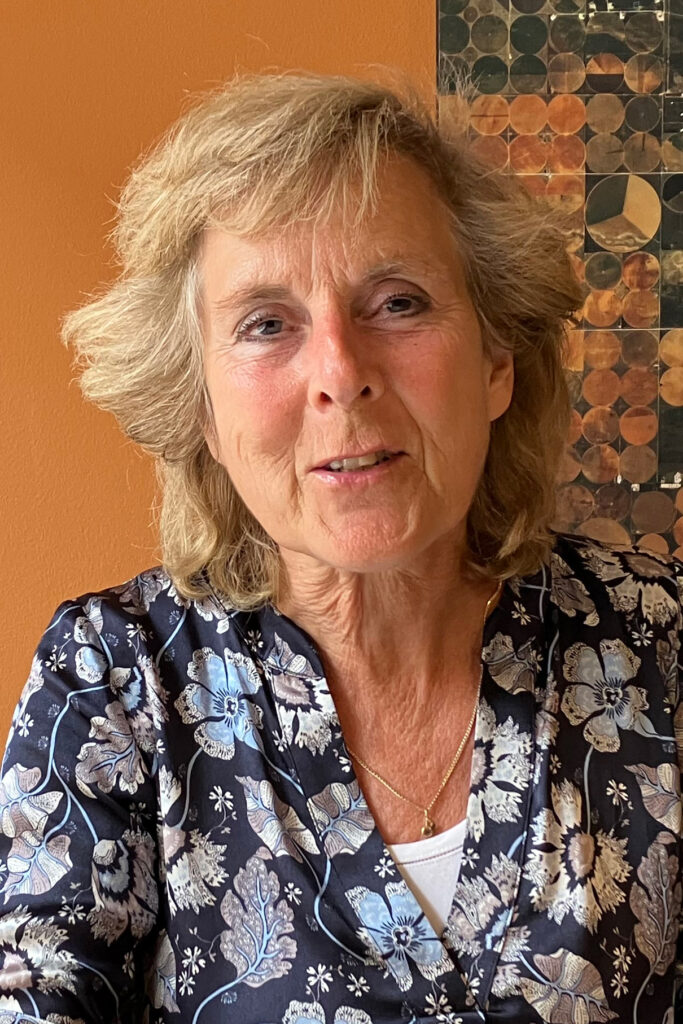
She speaks from decades of experience in Danish and European politics, starting with her election to the Danish parliame nt in 1984 as a member of the Conservative People’s Party, a tenure that included hosting the 2009 United Nations Climate Change Conference in Copenhagen. She also was a leader in Danish climate policy.
She said some context is necessary to understand why the goal of cutting emissions by 70 percent by 2030 exists, and why it’s still a substantial progress if Denmark is a year or two late in meeting the goal.
“It was a really, really ambitious target,” she said, speaking at Concito’s offices in Copenhagen.
The 2030 goal was agreed to in 2019 as part of negotiations between parties to form a new government following a general election.
In the election, the center-left Social Democrats won the most seats and then needed to negotiate with other parties to form a coalition to secure a majority of votes.
Two of the most likely coalition partners, the Red–Green Alliance and the Socialist People’s Party, insisted on an acceleration of the country’s decarbonization goals.
The result, after talks that lasted weeks, was that the Social Democrats secured agreements from four other parties to form a coalition; Frederiksen, the Social Democrats’ leader, would become prime minister for the first time; and the partners would set a new target of 70 percent emissions reduction by 2030.
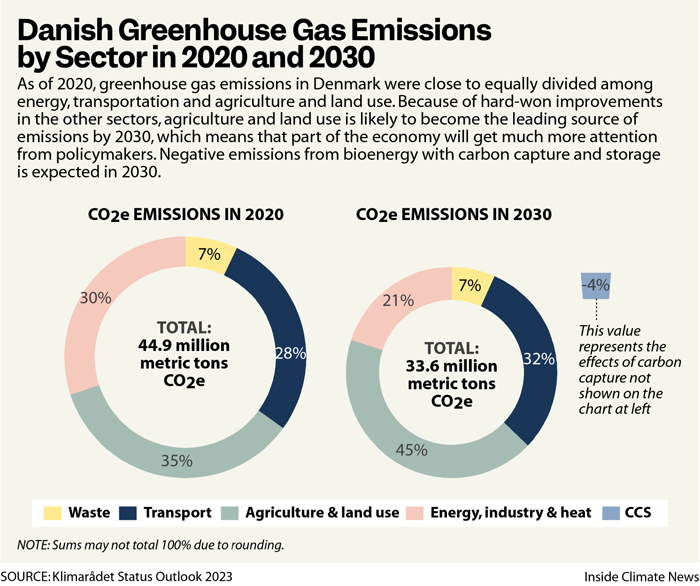
The goal, Hedegaard said, has helped to inspire progress, but even that probably isn’t enough to reach the target. She thinks the country is more likely to hit 70 percent a year or two after 2030. (Her assessment is similar to that of the government’s official panel of climate experts, which said in February that the country is not on track to hit the goal.)
“There is a lot of impatience out there,” she said. “If you ask in this house with a lot of green organizations, people will say, ‘Nothing is happening.’ It’s not true that nothing is happening. A lot is happening.”
The Pace of Change
Denmark’s leaders want to spread the word of their successes to audiences abroad, even as they engage in spirited disagreements at home.
Magnus Højberg Mernild explained this contrast as a normal and healthy part of the progress that’s needed. He is the lead spokesman for State of Green, a partnership between the government and clean energy businesses that seeks to tell Denmark’s green transition story to international audiences.
“Everyone in Denmark agrees that we have to push ahead,” he said. “We have to be a front runner. It’s just, how do we go about it?”
State of Green has offices in a highly energy efficient, glass-walled building near Tivoli Gardens, a landmark amusement park in the center of Copenhagen. In the lobby is a display rack full of publications about Denmark’s energy transition in different sectors.
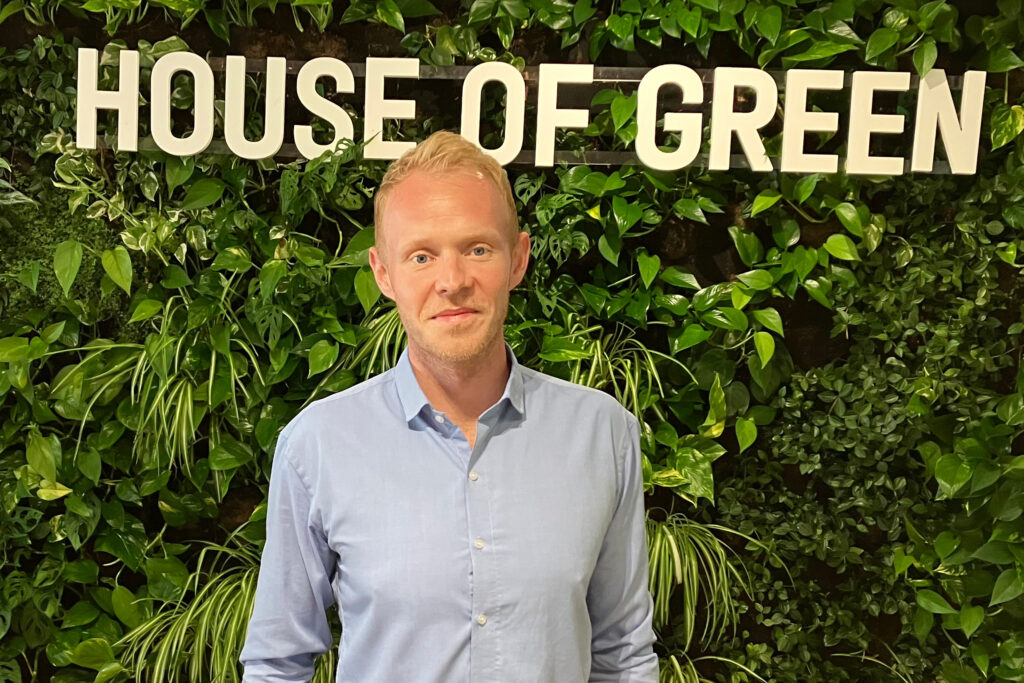
He spoke with frankness about the internal challenges, like how experts are struggling to discern the mix of policies that would be most effective at reducing emissions from farms. “We still don’t know how to wrap our heads around” reforming the agricultural sector, he said.
One of the stories Denmark would like to tell international audiences is about how energy islands are highly efficient producers of renewable energy and engines of economic vitality.
State of Green had considered sponsoring a tour this summer that would bring international journalists to Bornholm to show them the transformation in progress.
“We actually ended up dumping the idea, because there’s very little to see right now,” Mernild said. “The progress is rather slow.”
Bornholm’s energy island doesn’t yet fit alongside the other success narratives that Denmark likes to promote.
Whether talking about the energy island or some other climate or energy initiative, the discussion often boils down to ideas that sometimes feel like they are in conflict: Denmark is a global leader in its climate ambitions and actions, but it isn’t moving fast enough.
And, it’s OK to be proud and frustrated at the same time.
“You have to be realistic,” Hedegaard said. “And then sometimes when you then step back, and look at the last 20 years, things have changed profoundly. Is it frustrating that the speed with which (things) change is so incredibly slow? Yes, it is.”







